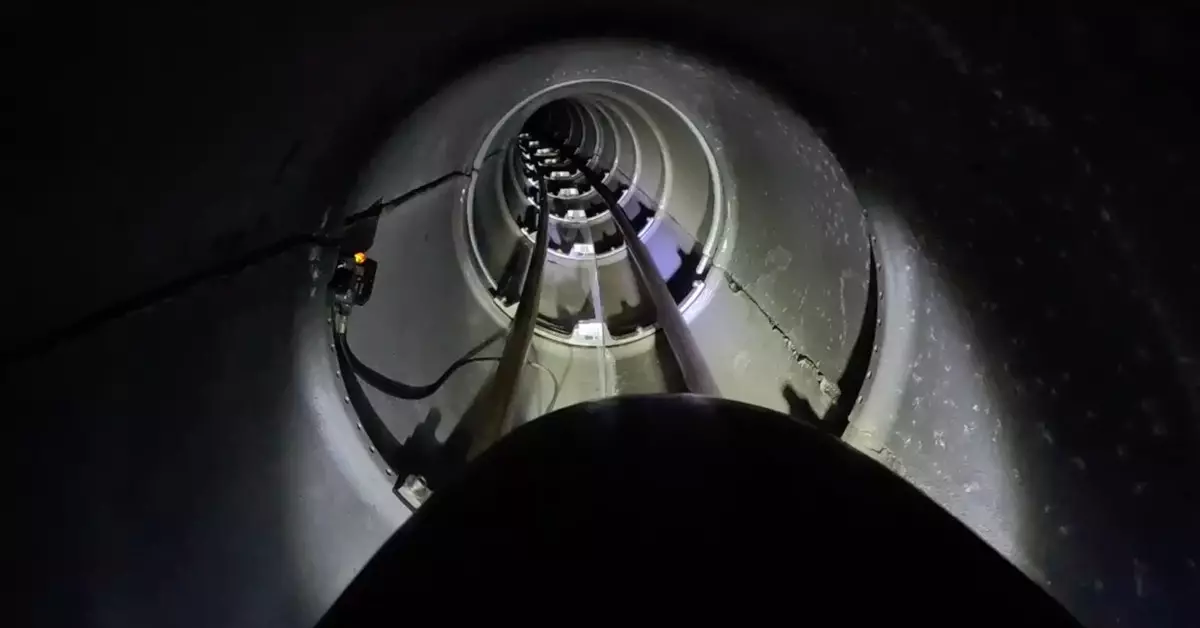The hyperloop concept, once thought to be languishing in the annals of failed tech aspirations, is experiencing a rekindling of interest, albeit on a substantially diminished scale. This article delves into the recent developments surrounding hyperloop technology, focusing on the latest tests and the broader implications of such innovations in transportation.
Just a year ago, many in the technology and transportation sectors seemed to lay the hyperloop to rest, largely due to the closure of major companies like Hyperloop One and the pervasive skepticism surrounding the ambitious concept. Originally proposed by Elon Musk, the hyperloop promised nothing short of a transportation revolution: passenger and cargo capsules whizzing through vacuum tubes at speeds rivaling aviation. However, a recent test conducted in Switzerland has breathed new life into these aspirations, though one must temper enthusiasm with realism.
The Swiss test unveiled a 1/12th scale model that executed a modest journey of 11.8 kilometers at approximately 25.3 mph. While impressive in its own right, this feat underscores the significant gap between experimental models and the massive logistical challenge of developing a fully operational system. The project, dubbed “LIMITLESS,” aims to explore the functional viability of the hyperloop framework. Yet, the hyperloop remains a distant dream when juxtaposed against the ambitious scope of Musk’s original vision.
The LIMITLESS project is a collaboration involving institutions like the Federal Institute of Technology Lausanne and Swisspod Technologies, promising innovative solutions through linear induction motor technology. Testing the subsystems associated with propulsion, communication, and energy consumption appears to be a vital step toward refining the operational blueprint. However, one must ask: does this research genuinely signify progress toward a working hyperloop system, or is it merely a series of academic exercises?
Such experimental projects often fall short of real-world application, particularly when confronted with critical challenges such as funding, regulation, and public perception. The former glories of hyperloop hype have given way to a more sobering reality where most companies striving for this utopian vision have vanished due to financial mismanagement or insurmountable obstacles.
While the singular focus on hyperloop systems paints a picture of innovative technology on the cusp of realization, we must assess the broader context of transportation evolution. Are we investing resources in a novelty that may ultimately detract from more immediate and practical solutions? For instance, electric vehicles, sustainable public transport, and enhanced rail networks often present far more attainable advancements with positive impacts on carbon footprints and urban mobility.
The grand ambitions of hyperloop may be enticing; however, potential investors and policymakers need to remain astute about the feasibility of such projects. The challenges that Elon Musk’s Boring Company encountered exemplify the unpredictable nature of infrastructure development. While Musk’s plans might have leaned toward futuristic transport mechanisms, traction was gained elsewhere, such as in established modes with proven records of progress.
As the Swiss team gears up for future tests, executives like Denis Tudor express optimism, promising that they’re on a pathway to implementing hyperloop systems for both passengers and freight. However, one cannot overlook the historical patterns that led to previous failures in establishing such tech. The lingering question continues to loom: will this be another cycle of ambitious promises followed by inevitable disappointment?
While recent developments indicate that hyperloop technology still has proponents willing to explore its potential, the reality is that its full realization faces numerous barriers. The urgency to address transportation issues with sustainable and effective solutions must take precedence over speculative dreams of futuristic travel. The hyperloop may yet prove a vital part of the transportation narrative, but until then, it remains more a hopeful vision than a tangible reality.


Leave a Reply